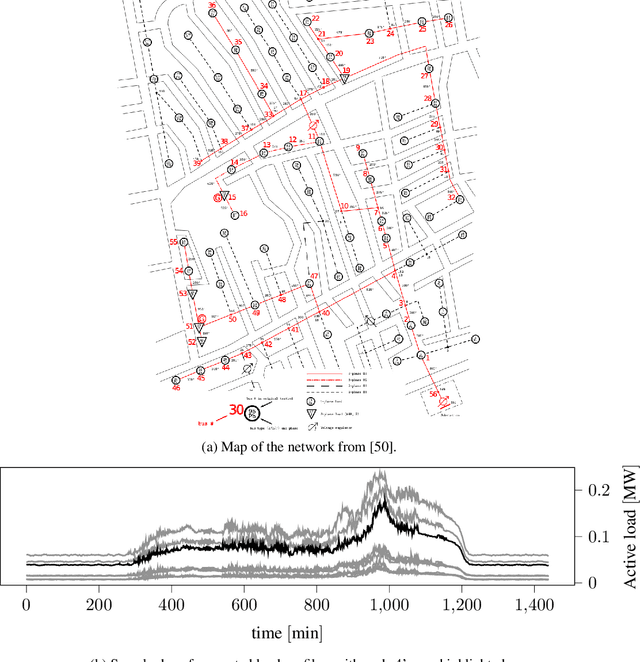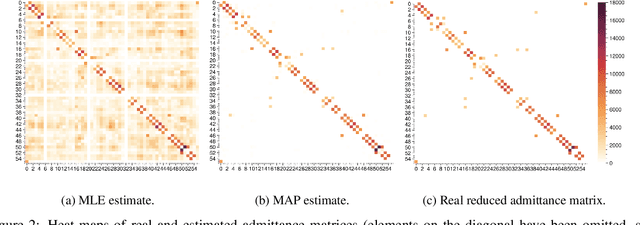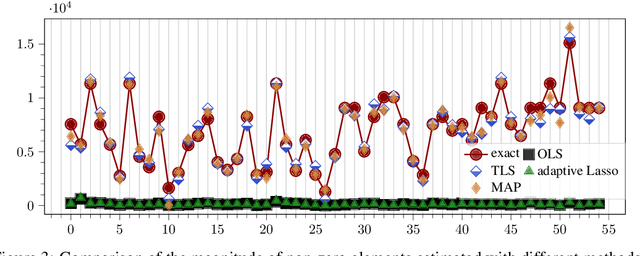Emanuele Fabbiani
Bayesian Error-in-Variables Models for the Identification of Power Networks
Jul 09, 2021



Abstract:The increasing integration of intermittent renewable generation, especially at the distribution level,necessitates advanced planning and optimisation methodologies contingent on the knowledge of thegrid, specifically the admittance matrix capturing the topology and line parameters of an electricnetwork. However, a reliable estimate of the admittance matrix may either be missing or quicklybecome obsolete for temporally varying grids. In this work, we propose a data-driven identificationmethod utilising voltage and current measurements collected from micro-PMUs. More precisely,we first present a maximum likelihood approach and then move towards a Bayesian framework,leveraging the principles of maximum a posteriori estimation. In contrast with most existing con-tributions, our approach not only factors in measurement noise on both voltage and current data,but is also capable of exploiting available a priori information such as sparsity patterns and knownline parameters. Simulations conducted on benchmark cases demonstrate that, compared to otheralgorithms, our method can achieve significantly greater accuracy.
Identification of AC Networks via Online Learning
Mar 13, 2020



Abstract:The increasing integration of intermittent renewable generation in power networks calls for novel planning and control methodologies, which hinge on detailed knowledge of the grid. However, reliable information concerning the system topology and parameters may be missing or outdated for temporally varying AC networks. This paper proposes an online learning procedure to estimate the admittance matrix of an AC network capturing topological information and line parameters. We start off by providing a recursive identification algorithm that exploits phasor measurements of voltages and currents. With the goal of accelerating convergence, we subsequently complement our base algorithm with a design-of-experiment procedure, which maximizes the information content of data at each step by computing optimal voltage excitations. Our approach improves on existing techniques and its effectiveness is substantiated by numerical studies on a 6-bus AC network.
Short-term forecasting of Italian gas demand
Jan 31, 2019



Abstract:Forecasting natural gas demand is a key problem for energy providers, as it allows for efficient pipe reservation and power plant allocation, and enables effective price forecasting. We propose a study of Italian gas demand, with particular focus on industrial and thermoelectric components. To the best of our knowledge, this is the first work about these topics. After a preliminary discussion on the characteristics of gas demand, we apply several statistical learning models to perform day-ahead forecasting, including regularized linear models, random forest, support vector regression and neural networks. Moreover, we introduce four simple ensemble models and we compare their performance with the one of basic forecasters. The out-of-sample Mean Absolute Error (MAE) achieved on 2017 by our best ensemble model is 5.16 Millions of Standard Cubic Meters (MSCM), lower than 9.57 MSCM obtained by the predictions issued by SNAM, the Italian Transmission System Operator (TSO).
Italian residential gas demand forecasting
Jan 04, 2019



Abstract:Natural gas is one of the most important energy sources in Italy: it fuels thermoelectric power plants, industrial facilities and domestic heating. Forecasting gas demand is a critical process for each energy provider, as it enables pipe reservation and stock planning. In this paper, we address the problem of short-term forecasting of residential gas demand, by comparing several statistical learning models, including Ridge Regression, Gaussian Processes, and Deep Neural Networks. We also present the preliminary steps of preprocessing and feature engineering. To the best of our knowledge, no benchmark is available for the task we performed, thus we derive a theoretical performance limit, based on the inaccuracy of meteorological forecasts. Our best model, a deep neural network, achieves an RMSE which is about double with respect to the performance limit.
 Add to Chrome
Add to Chrome Add to Firefox
Add to Firefox Add to Edge
Add to Edge